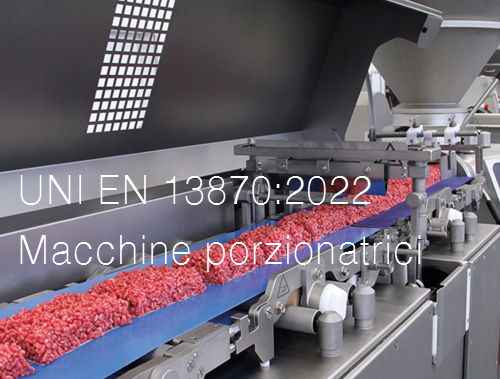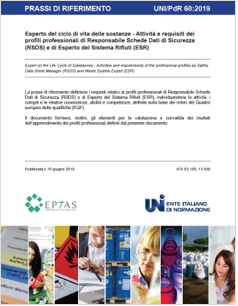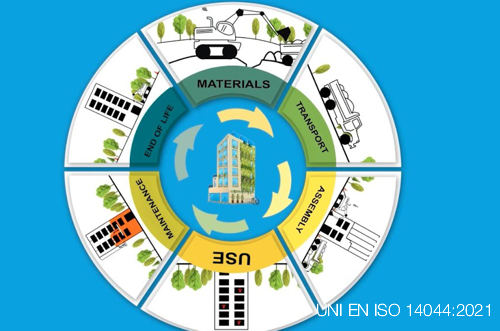UNI EN 13870:2022 - Macchine porzionatrici

UNI EN 13870:2022 - Macchine porzionatrici
ID 15506 | 21.01.2022 / In allegato Preview
UNI EN 13870:2022 Macchine per l'industria alimentare - Macchine porzionatrici - Requisiti di sicurezza e di igien...
AMENDMENT 1 Octobre 2019
ISO 18640-1:2018/Amd 1:2019(en) Protective clothing for firefighters — Physiological impact — Part 1: Measurement of coupled heat and moisture transfer with the sweating torso - AMENDMENT 1
ISO 18640-2:2018/Amd 1:2019(en) Protective clothing for firefighters — Physiological impact — Part 2: Determination of physiological heat load caused by protective clothing worn by firefighters - AMENDMENT 1
Protective clothing for firefighters — Physiological impact — Part 1: Measurement of coupled heat and moisture transfer with the sweating torso
This document provides a test method for evaluating the physiological impact of protective fabric ensembles and potentially protective clothing ensembles in a series of simulated activities (phases) under defined ambient conditions. This standard test method characterizes the essential properties of fabric assemblies of a representative garment or clothing ensemble for thermo-physiological assessment:
— dry thermal insulation;
— cooling properties during average metabolic activity and moisture management (dry and wet heat transfer);
— drying behaviour.
Default measurements are done on fabric samples representing the garment or protective clothing combination. Optionally and in addition to the standard test method, the same testing protocol can be applied to characterise more complex protective clothing ensembles including underwear, air layer and certain design features[1]. In addition, measurements on readymade garments are possible.
This test method is intended to be used to measure and describe the behaviour of fabric assemblies of a garment or clothing ensemble in response to a simulated series of activities under controlled laboratory conditions, with the results used to optimize garment combinations and material selection. Furthermore, this document together ISO 18640-2, is intended to be used to describe the thermo-physiological impact of protective clothing but not the risk for heat stress under actual fire conditions. The results of this test can be used as elements of a risk assessment with respect to thermo-physiological load.
[1] A study conducted by Empa (Swiss Federal Laboratories for Materials Science and Technology, Switzerland) showed good correlation between results of standard torso tests (without underwear and air layers on fabrics) to tests on fabrics with underwear, tests on fabrics with underwear and air layers and test on readymade garments (with underwear and with or without air layers) of the same material composition. Due to the added thermal insulation values of the additional layers direct comparison of results between different measurement configurations is not possible, however.
Protective clothing for firefighters — Physiological impact — Part 2: Determination of physiological heat load caused by protective clothing worn by firefighters
This document specifies a method for evaluating the thermo-physiological impact of protective fabric ensembles and potentially protective clothing ensembles in a simulated activity under defined relevant conditions for firefighters.
This document is intended to be used to assess the thermo-physiological impact of protective fabric ensembles and potentially protective clothing ensembles but not the risk for heat stress due to actual fire conditions. The results of this test method can be used as elements of characterisation and comparison of thermo-physiological impact of various types of protective fabric ensembles and potentially protective clothing ensembles.
Default measurements are undertaken on fabric samples representing the garment or protective clothing combination. Optionally and in addition to the standard test method, the same testing protocol can be applied to characterise protective clothing ensembles including underwear, air layers and certain design features[1]. In addition measurements on readymade garments are optionally possible.
NOTE The presently used evaluation methods are only validated for structural firefighting garments.
[1] A study conducted at Empa (Swiss Federal Laboratories for Materials Science and Technology, Switzerland) showed good correlation between results of standard torso tests (without both underwear and air layers on fabrics) to tests on fabrics with underwear, tests on fabrics with underwear and air layers and test on readymade garments (with underwear and with or without air layers) of the same material composition. Due to the different thermal insulation of the systems direct comparison of the results is not possible.

ID 15506 | 21.01.2022 / In allegato Preview
UNI EN 13870:2022 Macchine per l'industria alimentare - Macchine porzionatrici - Requisiti di sicurezza e di igien...

UNI/PdR 60:2019 - RSDS (Responsabile Schede di Dati di Sicurezza) ed ESR (Esperto Sistema Rifiuti)
UNI, 10.06.2019
La presente prassi di riferimento definisce...

UNI EN ISO 14044:2021 Gestione ambientale - Valutazione del ciclo di vita - Requisiti e linee guida
Recepisce:
EN ISO 14044:2006/A2:2020
EN ISO ...
Testata editoriale iscritta al n. 22/2024 del registro periodici della cancelleria del Tribunale di Perugia in data 19.11.2024